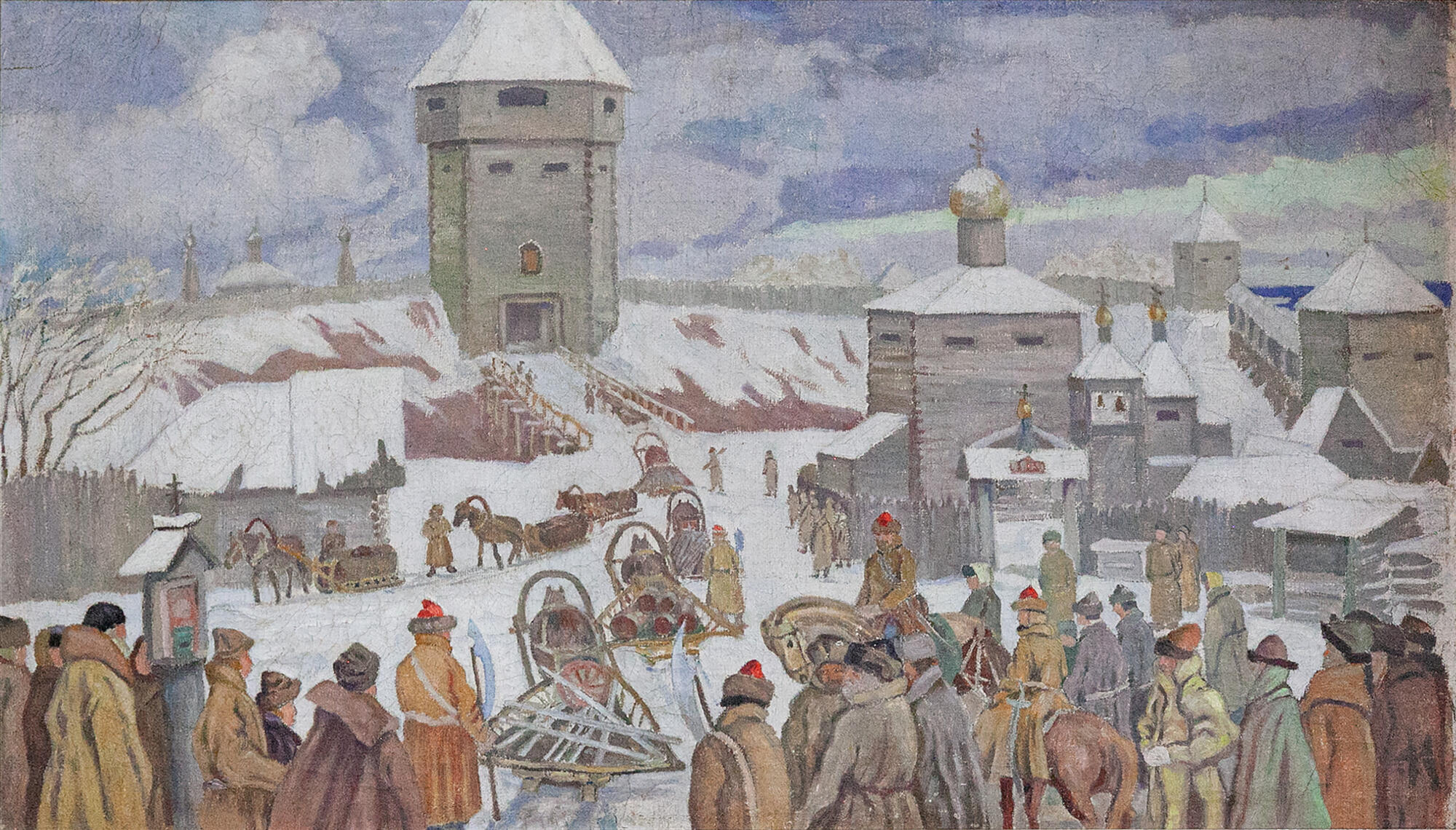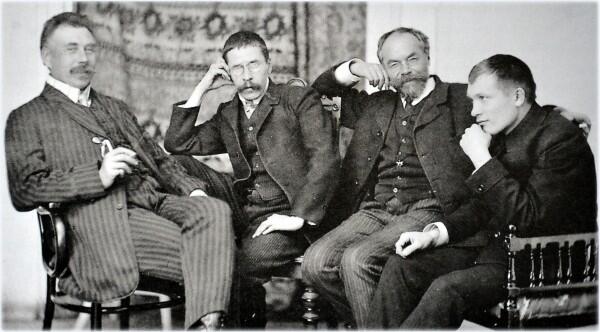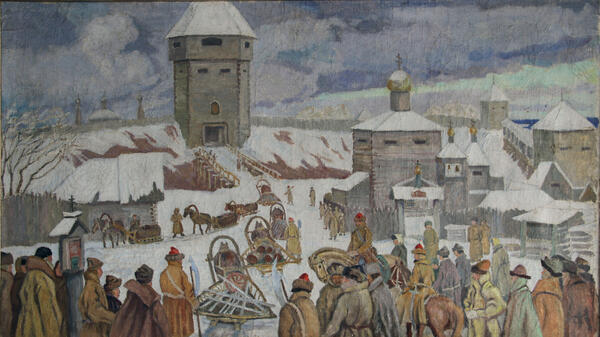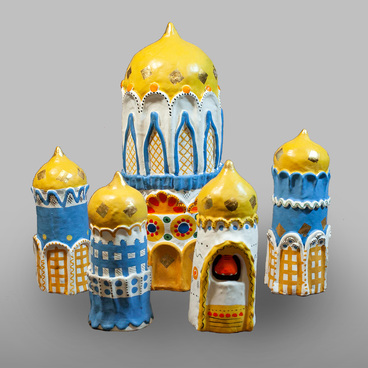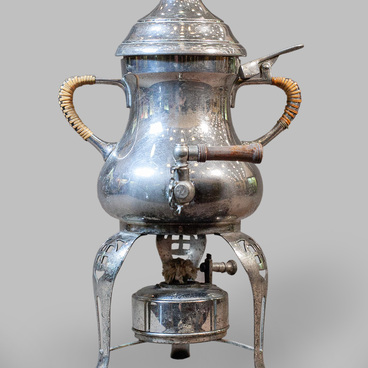The exhibition “Characters and Events of Vyatka History” at the Diorama Museum and Exhibition Center tells the story of Vyatka since the end of the 19th century. The town was founded in 1374 and has been renamed several times over its long history: initially, it was known as Vyatka and after 1457 as Khlynov. In 1780, Catherine II reinstated its original name of Vyatka, and in 1934, the Soviet authorities renamed the town, giving it the name of Kirov.
“The Construction of the Khlynov Kremlin Wall” is a painting that attracts visitors with a true-to-life depiction of the events and its artistic merits. It was painted by Nikolay Nikolayevich Rumyantsev, an artist and a graduate of the St. Petersburg Academy of Arts. The artist arrived at Vyatka in 1892.
In “The Construction of the Khlynov Kremlin Wall in the 17th Century”, Rumyantsev depicted one of the episodes of the town’s history. The Kremlin was founded back in 1457 when the contradictions between the Vyatka region and the Moscow principality escalated and there were constant appanage wars. Although the Vyatka land stopped being a frontier zone in the second half of the 16th century, the government continued fortifying Khlynov in the turbulent time of rebellions. A wooden wall with towers was rebuilt around the Kremlin, a deep moat was dug and filled with water, and a rampart surrounding the town was built and expanded. A wooden wall with towers was also built on the posad rampart.
During a massive fire in 1700, the Kremlin and posad walls were destroyed. The construction of a new stone wall of the Khlynov Kremlin began, which was completed by the early 19th century. The new wall had a height of 2 sazhens (approximately 4.3 meters or 14 feet). People enthusiastically participated in the construction. The painting shows many service class people joining the work. As a rule, they handed down their business to the next generation and were interested in protecting their property in their hometown.
By the end of the 18th century, the Khlynov Kremlin wall no longer served as a means of defense and was used to guard the territory of the bishop’s house. The last towers and the remains of the old fortress walls were demolished during the urban redevelopment in the 1780s.
“The Construction of the Khlynov Kremlin Wall” is a painting that attracts visitors with a true-to-life depiction of the events and its artistic merits. It was painted by Nikolay Nikolayevich Rumyantsev, an artist and a graduate of the St. Petersburg Academy of Arts. The artist arrived at Vyatka in 1892.
In “The Construction of the Khlynov Kremlin Wall in the 17th Century”, Rumyantsev depicted one of the episodes of the town’s history. The Kremlin was founded back in 1457 when the contradictions between the Vyatka region and the Moscow principality escalated and there were constant appanage wars. Although the Vyatka land stopped being a frontier zone in the second half of the 16th century, the government continued fortifying Khlynov in the turbulent time of rebellions. A wooden wall with towers was rebuilt around the Kremlin, a deep moat was dug and filled with water, and a rampart surrounding the town was built and expanded. A wooden wall with towers was also built on the posad rampart.
During a massive fire in 1700, the Kremlin and posad walls were destroyed. The construction of a new stone wall of the Khlynov Kremlin began, which was completed by the early 19th century. The new wall had a height of 2 sazhens (approximately 4.3 meters or 14 feet). People enthusiastically participated in the construction. The painting shows many service class people joining the work. As a rule, they handed down their business to the next generation and were interested in protecting their property in their hometown.
By the end of the 18th century, the Khlynov Kremlin wall no longer served as a means of defense and was used to guard the territory of the bishop’s house. The last towers and the remains of the old fortress walls were demolished during the urban redevelopment in the 1780s.
